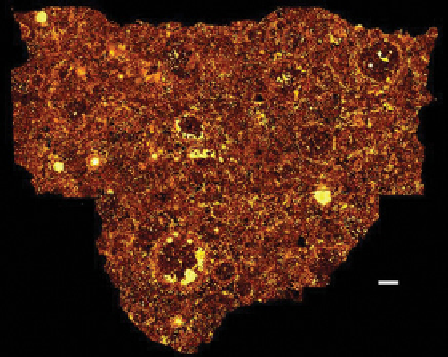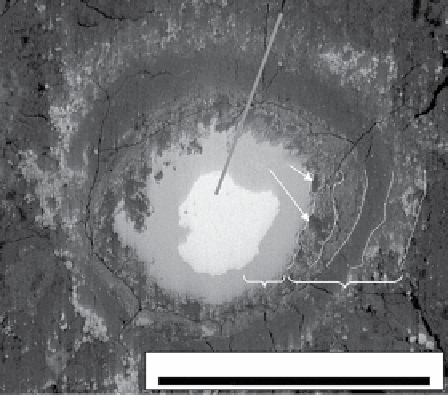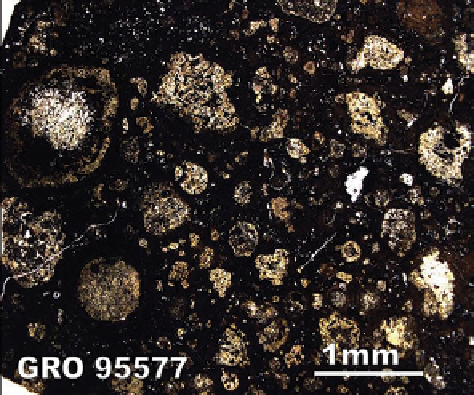Geology Reference
In-Depth Information
CR1 chondrite
106.2 g
Found January 10, 1996
6.4 × 3.6 × 3.3 cm
Weathering = B
CR chondrites are one of the most primitive carbonaceous chondrite
groups, but they also record moderate secondary aqueous alteration.
Unusual characteristics are their high (50%-60%) content of relatively
large (0.7 mm) chondrules, high metal contents (7%-8%), and hydrated
(phyllosilicate-rich) fine-grained matrix. Most chondrules are porphyritic
types, and many chondrules have metal and sulfide rims. The matrix con-
tains a wide range of minerals such as carbonates, sulfides, and magnetite,
as well as serpentine and saponite. CR1 chondrites have undergone exten-
sive aqueous alteration and contain no anhydrous silicates. There are not
many CR1 chondrites known, so the properties of this group are based on
very few samples.
GRO 95577,0
500
µ
m
GRO 8
Matrix
Matrix
Spots
Metal
12
34
Inner
Rim
External
Rim
250
µ
m
Plate 27
MiNERALogy
SigNiFiCANCE
Remarkably, all of the chondrules in gRo 95577 are
completely hydrated, consisting almost entirely of phyl-
losilicates, magnetite, and sulfides. Despite the mineral-
ogic conversion, the initial chondrule textures and
chondrule-matrix boundaries are well preserved (above
right, [187]).
gRo 95577 was the first classified as a CR1, and remains
one of the most highly studied examples. it records effects
of alteration on many of the unique features of CR2 such
as organic compounds, chondrules, CAis, and nebular
metal (lower right, [186]).
References [180-188]




